The constellation of Horologium, the celestial pendulum clock, is a faint constellation that is visible in the southern celestial hemisphere. It was first described in 1756, by French astronomer Nicolas Louis Lacaille.
Key Facts & Summary
- The constellation of Horologium is the 58th largest constellation in the sky, out of the 88 modern constellations. It stretches for over 249 square degrees.
- Horologium contains 4 stars that host planets, once of which, Gliese 1061, has an exoplanet in its habitable zone.
- The brightest star in the constellation of Horologium is Alpha Horologii, which is a solitary orange-hued giant star, that has an apparent magnitude of +3.85.
- Alpha Horologii is located at around 115 light-years away from our Solar System.
- The constellation of Horologium doesn’t contain any Messier Objects, and no meteor showers are associated with this constellation.
- Some prominent stars in Horologium, apart from Alpha Horologii, are Lambda Horologii, Beta Horologii, Mu Horologii, Nu Horologii, Delta Horologii, Iota Horologii, HD 27631, or Gliese 1061.
- Around 41 stars in Horologium are brighter than or equal to magnitude 6.5.
- The star, R Horologii, has one of the largest variations in brightness.
- The constellation of Horologium also hosts many interesting deep-sky objects, such as the NGC 1261 globular cluster, the globular luster Arp-Madore 1, the spiral galaxy NGC 1512, the dwarf lenticular galaxy NGC 1510, or the Horologium-Reticulum Supercluster, which is a galaxy supercluster, second in size only to the Shapley Supercluster.
- The Horologium-Reticulum Supercluster contains around 20 Abell galaxy clusters.
- The best time to observe the stars and deep-sky objects situated in the constellation of Horologium is during the month of December when the constellation is the most prominent in the sky.
Horologium Constellation
The constellation of Horologium is a small, and faint constellation. It is a relatively new constellation, being created in the 18th century, by the French astronomer Nicolas Louis de Lacaille.

Horologium was originally named Horologium Oscillitorium – which translates to “the pendulum clock” – however, the name was shortened to the Latin, Horologium – which translates to “the clock”.
Horologium isn’t associated with any myths, and it has faint stars in it, however, this constellation contains many interesting deep-sky objects such as the Horologium Supercluster – a massive supercluster that contains around 5,000 galaxy groups.

Location
The constellation of Horologium is located in the southern sky. Horologium is the 58th largest constellation in the sky, stretching for around 249 square degrees.
Horologium is located in the first quadrant of the southern hemisphere (SQ1), and it can be seen at latitudes between +30o and -90o. Horologium’s region is visible to observers south of 23oN.
- Right Ascension: 3h
- Declination: -60o
- Visible: between +30o and -90o
- Best seen: at 21:00 ( 9 p.m. ) during December

The neighboring constellations around Horologium are Caelum, Dorado, Eridanus, Hydrus, and Reticulum. The constellation of Horologium is part of the Lacaille family of constellations, along with Antlia, Caelum, Circinus, Fornax, Mensa, Microscopium, Norma, Octans, Pictor, Reticulum, Sculptor, and Telescopium.
Notable Stars in the Constellation of Horologium
There are a couple of notable stars situated in the constellation of Horologium. The stars with exoplanets in Horologium are Iota Horologii, HD 27631, WASP-120, and Gliese 1061.
The brightest star in Horologium is Alpha Horologii, which has an apparent magnitude of +3.853. It is the only star brighter than magnitude 4 in this constellation. Another famous star in Horologium is R Horologii, which has the largest variations in brightness among all the stars in the night sky visible to the naked eye.

Some other interestings stars in Horologium are Lambda Horologii, Beta Horologii, Mu Horologii, Nu Horologii, Delta Horologii, Iota Horologii, HD 27631, or Gliese 1061.
Alpha Horologii
Alpha Horologii is an orange-hued giant star, located at around 115 light-years away from our Solar System. It is the brightest star in Horologium, having an apparent magnitude of +3.853, and an absolute magnitude of +1.08.

Alpha Horologii is a K-type star, having consumed its hydrogen supplies within its core, and thus it has expanded much of its radius. This star has 155% of our Sun’s mass, 3,761% of its radius, and it is cooler than our Sun, having temperatures of around 5,028 K. Alpha Horologii is more than 60 times bigger than our Sun, and it is moving away from us, at a speed of around +21.6 km / 13.4 mi.
Delta Horologii
Delta Horologii is the second-brightest star in the constellation of Horologium. It is a binary star, having a combined apparent magnitude of 4.93. It is located at around 179 light-years away from Earth.
Delta Horologii is comprised out of two stars, an A-type main-sequence star, which has an apparent magnitude of 5.15, and a much fainter companion that has an apparent magnitude of 7.29.

The primary star has an oblate shape with an equatorial bulge that is 15% larger than its polar radius. This is because Delta Horologii A is a fast-spinning star, having a rotational velocity of 220 km / 136.7 mi per second.
Delta Horologii A has around 141% of our Sun’s mass, and it is hotter, with average surface temperatures of around 7,033 K. This star is also quite young, being only 768 million years old. Little is known about the secondary component, designated as Delta Horologii B. What is known is that it has a rotational velocity of 51.7 km / 32.1 mi per second.
R Horologii
R Horologii is a red giant star located at around 1,000 light-years away from us. It has an average apparent magnitude of 7.22, however, it has one of the largest ranges in brightness variation.

R Horologii is classified as a Mira-type variable star, having an apparent magnitude that varies between 4.7 and 14.3 within a period of 404 days.
Gliese 1061
Gliese 1061 is a red dwarf star located at just 12.04 light-years away from us. It is among the closest stars to us, and it has an apparent magnitude of 13.03.
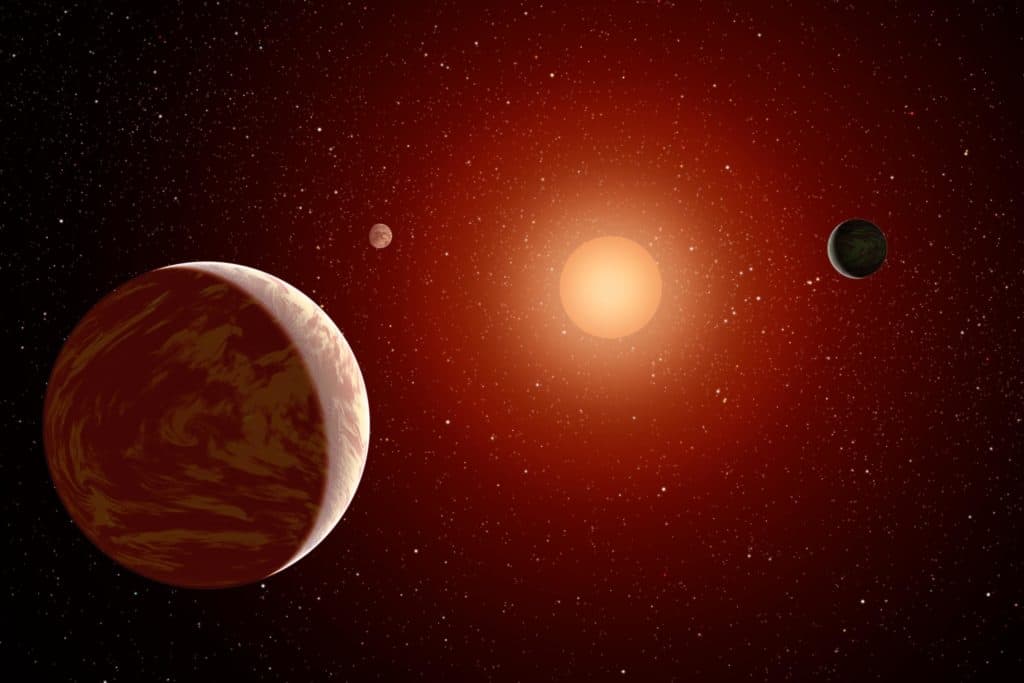
Gliese 1061 has three confirmed exoplanets orbiting it. One of them, Gliese 1061 d, orbits around the star’s habitable zone, while Gliese 1061 c, orbits its parent star within the inner edge of the habitable zone.
Beta Horologii
Beta Horologii is the third brightest star in the constellation of Horologium. It has an apparent magnitude of 4.979, and it is 312 light-years away from us.

Beta Horologii is an A-type giant star, and it is a chemically peculiar star of the metallic-line type. It has around 1,40% of our Sun’s radius, and it is 63 times brighter than our Sun.
Beta Horologii is also hotter than our Sun, having temperatures of around 8,303 K. This star is also a fast spinner, having a rotational velocity of 115 km / 71.4 mi per second.
Iota Horologii
Iota Horologii is a yellow-white dwarf star located at around 56.51 light-years away from us. It has an apparent magnitude of +5.40, and it also hosts an exoplanet.

The exoplanet is designated as Iota Horologii b, and it is believed to be a Jupiter-sized planet. Iota Horologii has 125% of our Sun’s mass, 116% of its radius, and it is 64% brighter than our Sun. This star has similar temperature values as our Sun.
Lambda Horologii
Lambda Horologii is a yellow-white hued evolved star, located at around 155.2 light-years away from us. It has an apparent magnitude of +5.35.

Lambda Horologii has around 176% of our Sun’s mass, 274% of its radius, and it is 13.3 times brighter than our Sun. This star is hotter than our Sun, having temperatures of around 6,848 K, and it is also a fast-spinning star, with a rotational velocity of +140 km / 86.9 mi per second.
TW Horologii
TW Horologii is an aging red giant star located at around 1,370 light-years away from us. It is a semiregular variable star, having an apparent magnitude of 5.71, which varies between 5.52 to 5.95 within 158 days.

TW Horologii is among the brightest carbon stars in the sky. This star has around 329% of our Sun’s mass, 16,360% of its radius, and it is 4,390 times brighter. TW Horologii is over 300 times bigger than our Sun.
HD 27631
HD 27631 is a G-type yellow dwarf star located at around 164.3 light-years away from us. It has an apparent magnitude of +8.26, and it hosts an exoplanet.

HD 27631 has only 94% of our Sun’s mass, the same radius, and temperature, and it is 4.4 billion years old. This star has 88% of our Sun’s brightness.
Deep-Sky Objects in Horologium
The constellation of Horologium hosts many interesting deep-sky objects, such as several globular clusters, like NGC 1261, Arp-Madore 1, or many galaxies, such as the Horologium-Reticulum Supercluster of galaxies, which contains over 20 Abell galaxy clusters.

NGC 1261
NGC 1261, also known as Caldwell 87, is a globular cluster in Horologium that was discovered in 1826 by Scottish astronomer, James Dunlop.

NGC 1261 is located at around 53,300 light-years away from us, having an apparent magnitude of 8.63. It is 59,000 light-years away from the Galactic Center.
This globular cluster is 10.24 billion years old, and the total mass of its stars exceeds 341,00 solar masses.
Arp-Madore 1
Arp-Madore 1 is a globular cluster located at around 402,000 light-years away from us. It is one of the most distant globular clusters in the Milky Way.
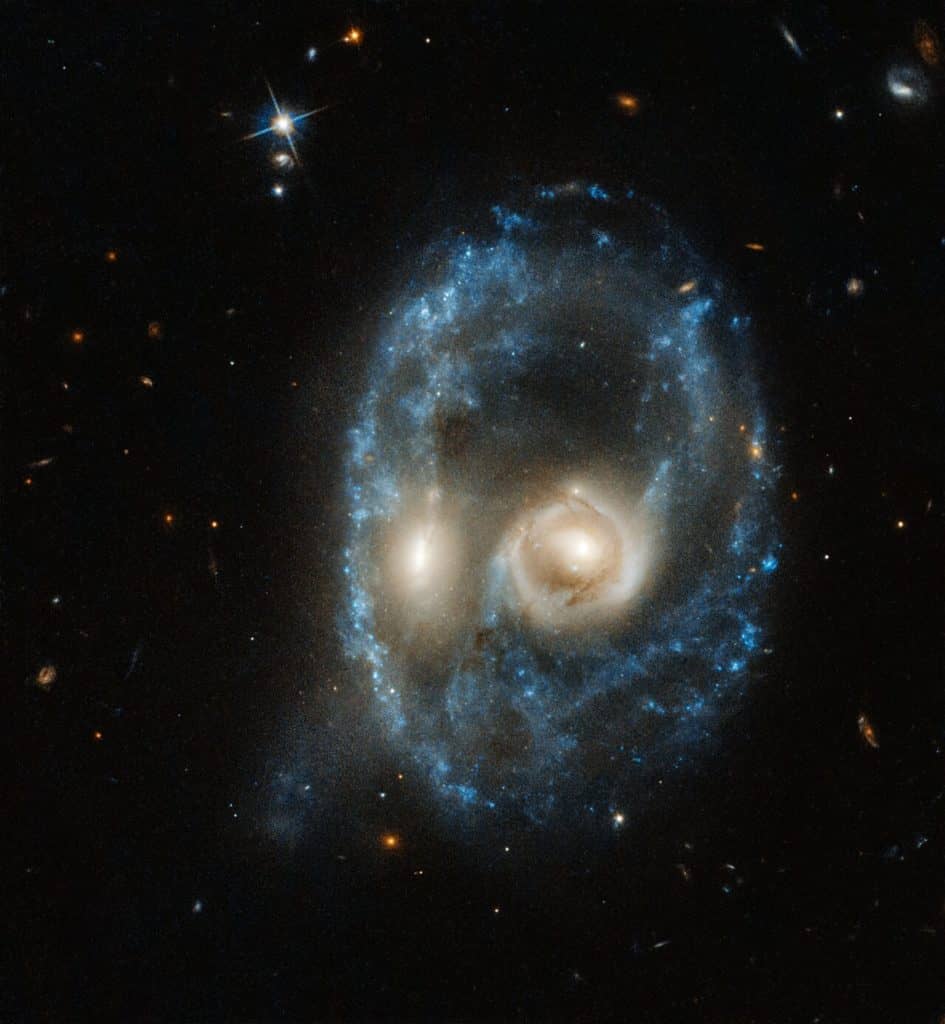
NGC 1512
NGC 1512 is a barred spiral galaxy located at around 38 million light-years away from us. It has an apparent magnitude of 11.1, and its UV disc contains at least 200 clusters with recent star formation activity.

NGC 1512 is a member of the Dorado Group of galaxies. The tidal gravitational forces of this galaxy are influencing the nearby dwarf lenticular galaxy NGC 1510, which is 5 arcminutes away.
NGC 1512 will cannibalize the dwarf galaxy NGC 1510. The merging process has already begun for around 400 million years.
NGC 1510
NGC 1510 is a dwarf lenticular galaxy located at around 38 million light-years away from us. It has an apparent magnitude of 12.40. It was discovered in 1836 by the famous English astronomer John Herschel, and it is in the process of merging with the larger spiral galaxy, NGC 1512.

Horologium-Reticulum Supercluster
The Horologium-Reticulum Supercluster is a massive supercluster that spans for around 550 million light-years. It is similarly as massive as the Laniakea Supercluster, which is home to our Milky Way Galaxy.

The nearest region of this cluster to us, lies at around 770 million light-years away, while the far end of it is 1.2 billion light-years. This supercluster is visible both in the constellation of Horologium and Eridanus.
The Horologium Supercluster has around 5,000 galaxy groups – 30,000 galaxies, and around 300,000 dwarf galaxies, including the galaxy cluster Abell 3266.
NGC 1448
NGC 1448 is an unbarred spiral galaxy located at around 55 million light-years away from us. It has an apparent magnitude of 10.7, and it can be seen nearly edge-on.
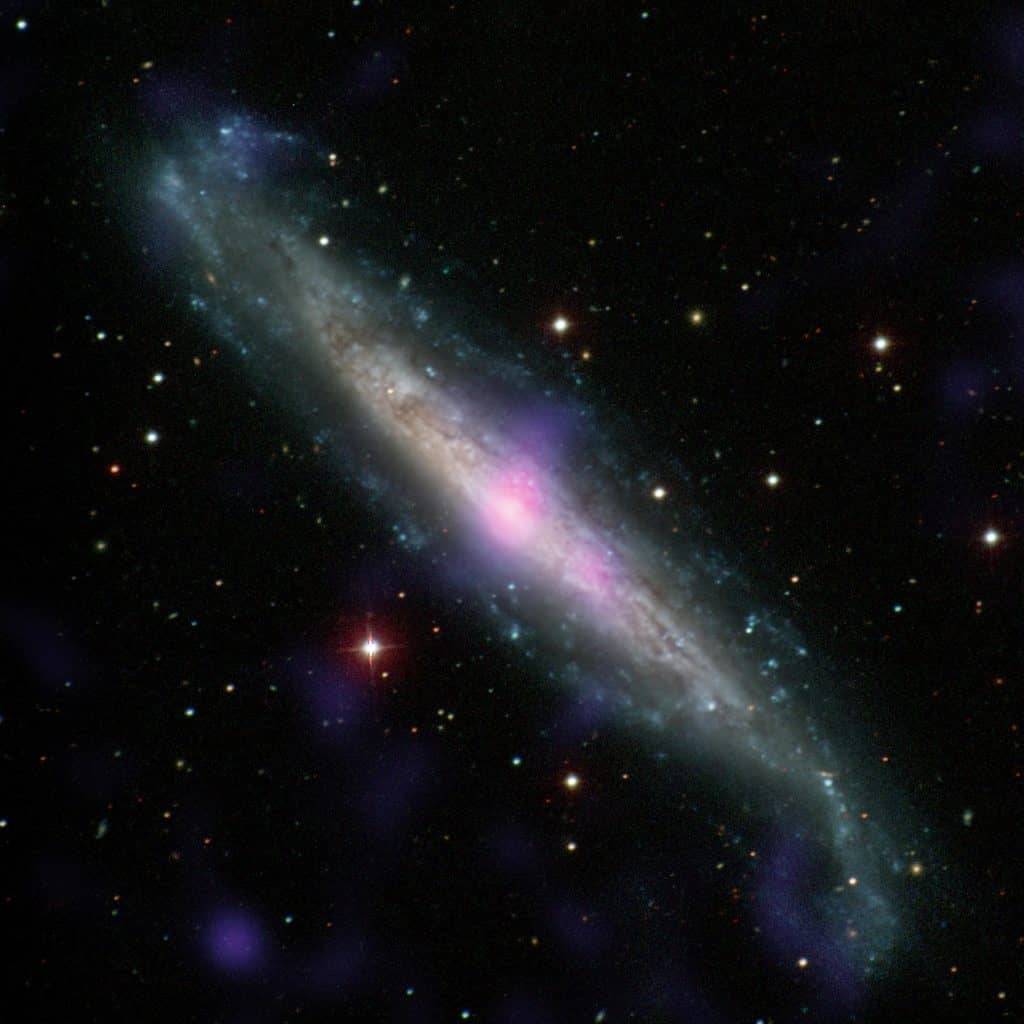
This galaxy contains a supermassive black hole at its center. NGC 1448 is part of the Doradus cloud of galaxies.
NGC 1433
NGC 1433, also known as Miltron’s Galaxy, is a barred spiral galaxy located at around 32 million light-years away from us. It has an apparent magnitude of 9.99.
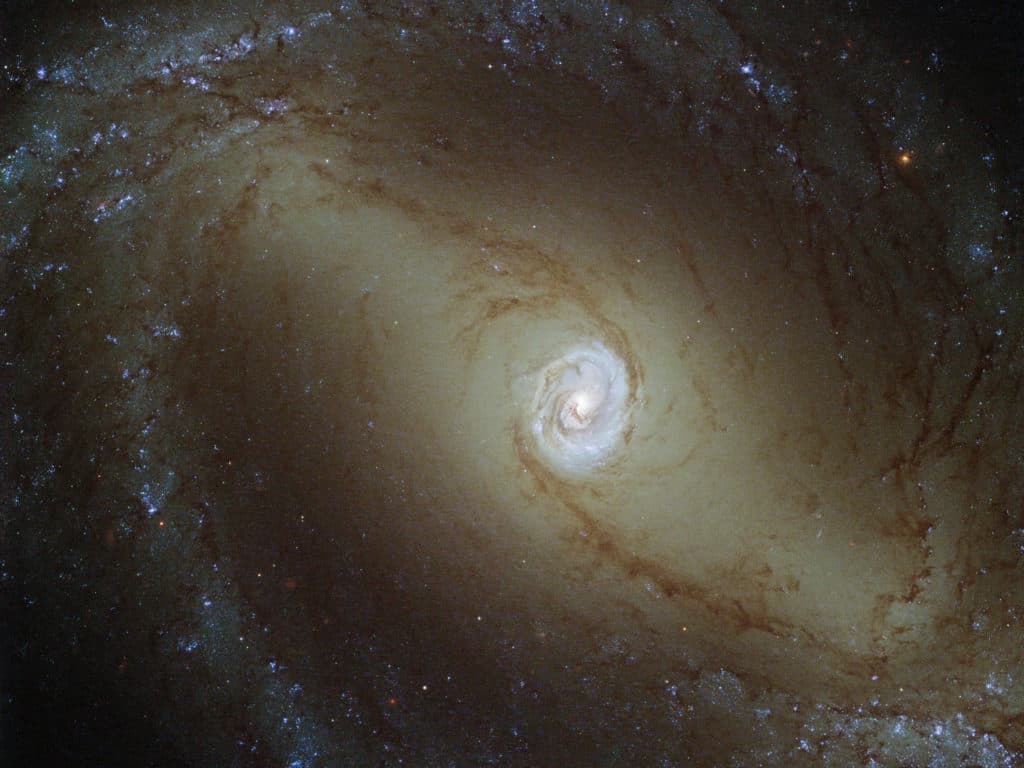
NGC 1433 has an active galactic nucleus, and it is also classified as a Seyfert galaxy. This galaxy is a member of the Dorado Group of galaxies.
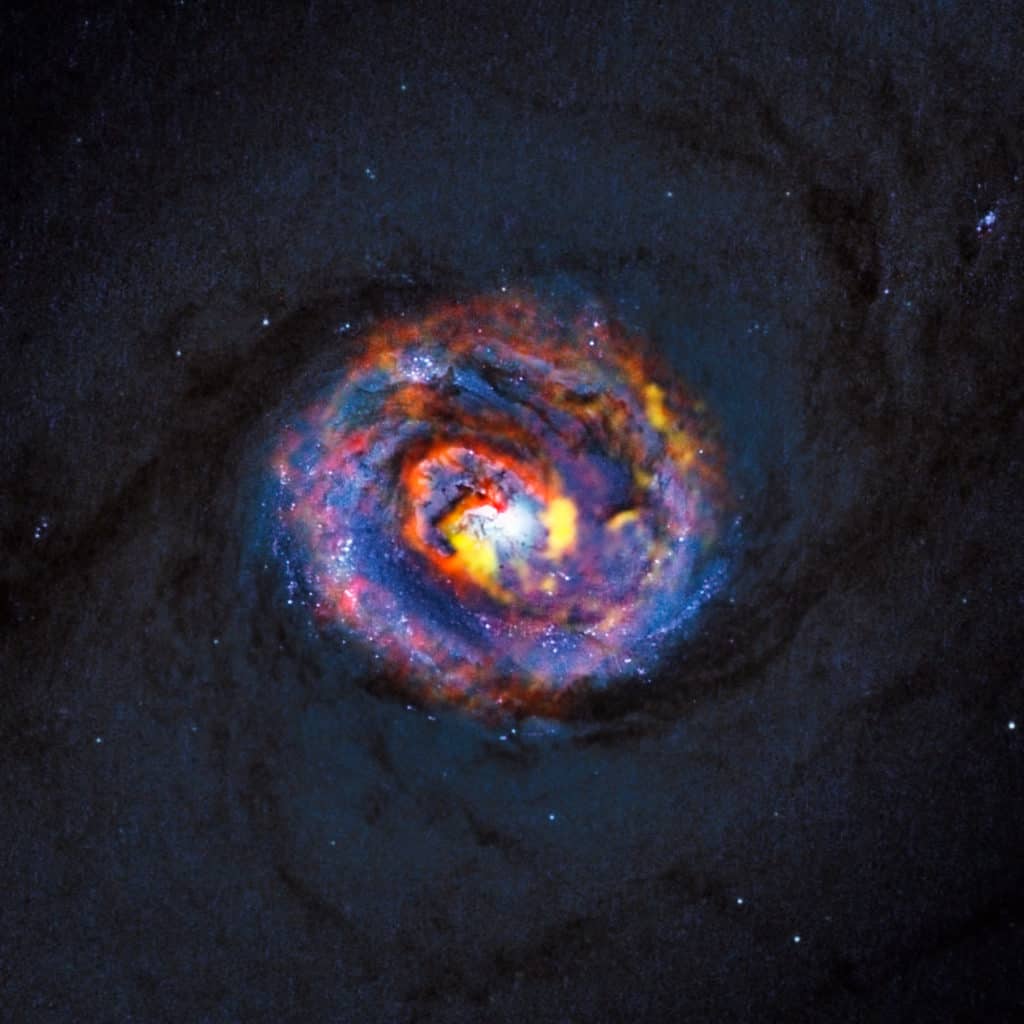
Did you know?
- The constellation of Horologium covers around 0.603% of the sky.
- The French astronomer Nicolas Louis de Lacaille first described Horologium as “the clock with pendulum and seconds in hand” in 1756.
- The Latin name for Horologium is derived from an ancient Greek word, which represented an instrument for telling the hour.
- All the constellation that depict scientific instruments in the night sky, symbolize the Age of Enlightenment.
Sources:
Image Sources:
- https://lh3.googleusercontent.com/proxy/5NcSVLIR_pSb0W-O4xPIDk8wtbd3c-91cmlDwvS–Pn90phLt3iiMBgFwOaSH6jaz1C2gC_l-QdYOUwbFdAYW5AkDE2rsy6vt3zmZMt4K8M
- https://starregistration.net/media/wysiwyg/Constellations/Horologium.png
- https://in-the-sky.org/images/constellations/con_HOR_000.png
- https://lh3.googleusercontent.com/proxy/ttjG5MuQ4SQW04f60OMIOFaaUS2rNBz_StsN_JLAWk9murAs7Ni9XIGc-sLl4Q29tiwgPq77apfjHcoaOvJAEbBd-zsSt8udaR6rU7QDtlvlVi4X6ZEql-0kTleoWyHz
- https://theskylive.com/sky/stars/star-images/13/1326_800.jpg
- https://theskylive.com/sky/stars/finder-charts/delta-horologii-finder-chart.png?c=1586769462
- https://newsmedia.tasnimnews.com/Tasnim/Uploaded/Image/1396/11/12/1396111218010733913196144.png
- https://upload.wikimedia.org/wikipedia/commons/a/a8/Planets_Under_a_Red_Sun.jpg
- https://theskylive.com/sky/stars/finder-charts/beta-horologii-finder-chart.png?c=1586732452
- https://upload.wikimedia.org/wikipedia/commons/5/50/Iota_Horologii.jpg
- https://lh3.googleusercontent.com/proxy/I5H-73m–1kWQrQ1DSlWtJ9grjgmH2QsGh0Jj6KYjABhfXgH2SEjPJ0S226pSM2Diz0f4sqsyk3rRe8
- https://www.cloudynights.com/uploads/monthly_09_2019/post-29900-0-50725400-1567946164.jpg
- https://lh3.googleusercontent.com/proxy/qhYBReVymeCCG_LzWqKQTda6InUkx7uGhV83M2gySZfUuSi0W5JH-o3DVTAAEy3PWWunfUVR7j4s51MMvjNeJYB5PtnSQ4MWt8U
- https://upload.wikimedia.org/wikipedia/commons/thumb/6/60/NGC_1512_and_NGC_1510.jpg/640px-NGC_1512_and_NGC_1510.jpg
- https://upload.wikimedia.org/wikipedia/commons/1/13/NGC_1261-HST10775_09R814GB555.png
- https://cdn.spacetelescope.org/archives/images/screen/heic1919a.jpg
- https://upload.wikimedia.org/wikipedia/commons/1/1c/NGC_1512.jpg
- https://scitechdaily.com/images/Hubble-Image-of-the-Week-NGC-1512-and-NGC-1510.jpg
- https://upload.wikimedia.org/wikipedia/commons/7/7d/Hor.gif
- https://upload.wikimedia.org/wikipedia/commons/6/6f/PIA21086_-_Galaxy_NGC_1448_with_Active_Galactic_Nucleus.jpg
- https://cdn.spacetelescope.org/archives/images/wallpaper5/potw1427a.jpg
- https://upload.wikimedia.org/wikipedia/commons/0/06/Composite_view_of_the_galaxy_NGC_1433_from_ALMA_and_Hubble.jpg
